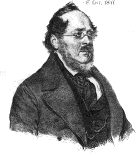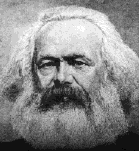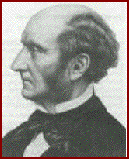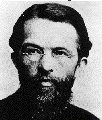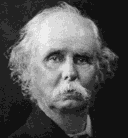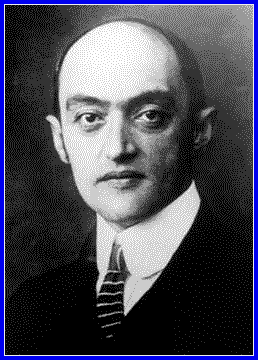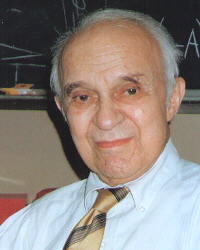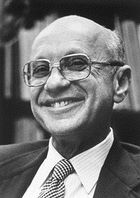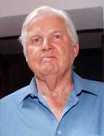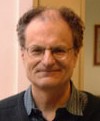Sunday, February 17, 2013
Carrefour: Up the right aisle
Up the right aisle
踏上正途
Georges Plassat is reviving the world’s second-biggest retailer
乔治·普拉萨正在复兴全球第二大零售企业
UNTIL recently, Carrefour’s supermarkets in France were run along Napoleonic lines. Strict orders emanated from its headquarters in Paris. Every store sold a similar range of products. If selling groceries were like marching an army over the Alps, this strategy would have worked brilliantly. But it isn’t, and it didn’t.
直到最近,家乐福在法国的超市都是以拿破仑式的管理方法运作的。巴黎总部发出的指令一向严格。每家店铺售卖的产品大同小异。如果杂货销售和领军翻越阿尔卑斯山是一回事,那这一策略想必效果绝佳。但是二者千差万别,因此这一策略并未达到预期的效果。

Customers enjoy choice, and their tastes vary. In Orange, for instance, a town in Provence where many north Africans live, E. Leclerc, a rival chain, was offering 20 varieties of chickpea. The local Carrefour had only two brands, sighs a big shareholder. Sales were flatter than pitta bread.
顾客喜欢自由选择,而且各自喜好不一。比如在北非人聚居的普罗旺斯小镇奥朗日,家乐福的竞争对手零售商E. Leclerc向顾客提供的鹰嘴豆有20种不同品牌。而当地的家乐福提供的只有两种品牌,家乐福的一位大股东对此嗟叹不已。销售业绩不见起色,比皮塔饼还平。
Enter Georges Plassat, the new boss who joined Carrefour last year. One of his first acts was to give store managers the power to adapt to local tastes. At the big Carrefour in Monaco, for example, out went the racks of cheap luggage, of the sort chic locals would be embarrassed to see their servants carrying. In came a sushi bar and a global wine selection. The place is now humming, says the investor.
于是,去年加入家乐福的新老板乔治·普拉萨登场了。这位上任新官的头三把火之一就是下放权力给分店经理,努力适应当地需求。比如在摩纳哥的大型家乐福超 市,因为时髦的当地人觉得让仆人扛着廉价行李箱太丢脸,所以这类行李箱全部下架。寿司吧和全球优质葡萄酒专区被开辟出来。投资者称,这个超市现在可谓生意 兴隆。
Not long ago Carrefour was in such trouble that a break-up seemed likely. It was rapidly losing market share in France, its biggest market, to Leclerc. The “hypermarket” model that it invented in the 1960s is considered to be well past its sell-by date. With more single and older customers, convenient city-centre supermarkets are becoming more popular, rather than vast stores on the edge of town selling everything from charcuterie to televisions. And retailing specialists in consumer electronics and fashion have eaten into Carrefour’s non-food business. Under Carrefour’s former chief executive, Lars Olofsson, a Swede, the firm issued five profit warnings in a year, more than any other big French company has ever made.
不久前,家乐福还深陷困境,差点分家。当时,它在主场法国的市场份额急剧丢失,被Leclerc抢占。1960年代由家乐福首创的“大规模超市”模式眼看 着过了保质期。单身的消费者越来越多,消费者年龄越来越大,因此便捷的市中心超市变得日益受欢迎,市镇边缘那些从熟食到电视什么都卖的大规模超市渐渐被冷 落。而卖家电、时装的专卖店又蚕食着家乐福的非食品生意。瑞典籍前总裁罗盛中(Lars Olofsson)在任时,家乐福公司一年内发布了五次盈利预警,为法国大公司之最。
But after six months under Mr Plassat, improvement is evident. “The tanker has turned,” opines John Kershaw of Exane BNP Paribas, a bank. According to Kantar, which measures retail-market share, Carrefour started winning back ground in France last spring. Its sales of food had fallen in every quarter except one since 2010, but in the last two quarters of 2012 they grew again. The decline in sales of non-food items, the trickiest area, also slowed sharply.
而普拉萨先生接手的六个月以来,家乐福有了显著的改善。“大船已经掉头了,”巴黎银行(Exane BNP Paribas)的约翰·克肖评论道。根据零售业市场份额统计机构坎塔(Kantar)的数据,家乐福已于去年春天开始夺回在法国的市场份额。2010年 以来食品销售额除了其中一个季度之外每个季度屡屡下滑,但是2012年的后两个季度都有所回升。最为棘手的非食品类商品销售量降幅明显减小。
What is Mr Plassat doing that his predecessors didn’t? Being French helps. The first boss to leave suddenly, in 2008, was José Luis Duran, a Spaniard with a background mainly in finance. His successor was Mr Olofsson, a marketing whiz from Nestlé, a food company. Mr Olofsson then brought in an Englishman from Tesco, James McCann, to run French hypermarkets, and he encouraged executives to communicate in English at headquarters. “Imagine a Frenchman going to Walmart’s headquarters in Bentonville and saying: ‘Now we will write and speak in French’,” scoffs an insider.
那么普拉萨到底使了什么新招呢?他是法国人,这一点是有好处的。第一位突然离职的老板是杜哲睿(José Luis Duran),他于2008年离职,是一位主要精于财务的西班牙人。他的继任者罗盛中,是来自食品公司雀巢的营销奇才。随后,罗盛中从乐购挖到了英国人詹 姆斯·麦卡肯(James McCann),由他来经营法国的大规模超市,而他鼓励总部的主管们用英语交流。“如果一个法国人来到本顿维尔(Bentonville),在沃尔玛的总 部说:‘从今往后,咱们口头书面交流都用法语’,这场景你能想象么?”一位内部人士对此嘲笑道。
Mr Plassat, by contrast, is a French shopkeeper through and through, having worked for Casino, another French supermarket chain, and for Carrefour itself back in the 1990s. “When dealing with something as sensitive as the place people get their food,” says Mr Plassat, “it’s important to be close to the local culture.”
而相比之下,普拉萨自始至终都在法国从事商店经营。他在另一家法国连锁超市卡西诺(Casino)工作过,而家乐福是他的老东家,1990年代他曾于此奉职。“做食品生意需要高度敏感,”普拉萨说,“贴近本土文化非常重要。”
His diagnosis of Carrefour’s problems is three-pronged. First, the firm failed to digest a merger with Promodès, a group of retail brands, in 1999. The two management teams fought in the aisles and neglected customers. Second, the group overexpanded internationally, leaving it with insufficient funds to invest at home. Its reputation for offering good value slipped. And it became over-centralised, starting well back in the 2000s, so that Leclerc’s local managers ran rings around it.
他把家乐福的问题归结为三个方面。第一,该公司未能消化与零售集团普美德斯(Promodès)在1999年的兼并。两个管理团队斗争激烈,忽视了消费 者。第二,该集团过度国际扩张,使得本土投资经费不足。它提供优质商品的好名声受损。而从2000年代开始采取的过度集中式管理,让Leclerc的本土 经理们有机可乘。
Mr Plassat has moved quickly to reverse all this, starting with the centralisation. Store managers can now decide how many kilos of pasta or bananas they want to stock. Before, head office simply told them. Now they are free to order regional products, which are popular, not just national brands. Mr Plassat has also sold Carrefour’s businesses in four countries: Greece, Colombia, Indonesia and Malaysia. The firm is still big in China and Brazil, but the proceeds from selling up in places where it was weak can be ploughed back into its European heartland.
普拉萨快速出击,从改变集中式管理开始扭转了局面。现在,商店经理可以决定进多少意大利面、囤多少香蕉了,不必再听任总部下指令。经理们还可以自行决定定 购消费者青睐的本地产品,不必拘泥于全国驰名品牌。家乐福还决定撤出希腊、哥伦比亚、印尼和马来西亚四国。该公司依然雄踞中国和巴西市场,但是撤出那些销 售业绩不佳的地方,所获得的进账资金可以回笼到总部了。
Mr Olofsson had started a revamp of 245 hypermarkets across Europe, which would have cost €1.5 billion ($2 billion) in total, called Carrefour Planet. Shoppers were treated to more theatrical food displays, nurseries and more organic produce. It was a step in the right direction but cost a bomb, says Natalie Berg of Planet Retail, a consultancy: the fancy stores cost twice as much as traditional Carrefour outlets.
罗盛中曾经花费15 亿欧元 (约合20亿美元)发起“家乐福星球计划”来为欧洲245家大规模超市改头换面。购物者们可以体验到布局精致的食物陈列区、苗圃和更多的有机农产品。咨询 公司行星零售(Planet Retail)的伯格(Natalie Berg)说,家乐福这一步在大方向上没有错,但是耗资巨大:精装修的商店比传统的家乐福超市造价高出了一倍。
What French shoppers crave, however, is lower prices. Mr Plassat is keen to oblige. His ads compare Carrefour’s stickers with those of Leclerc. And he is making cheap improvements. On a recent store visit he was buttonholed by a customer who had waited ages for ham to be sliced; he quickly agreed that the store should have a second slicing machine. Carrefour Planet, meanwhile, has been binned.
然而,法国消费者们真正渴求的是降价。普拉萨正热切地想要做到这一点。他在广告中将家乐福的标价与Leclerc的标价作比较。他用很低的成本来实现改 善。最近一次店内寻访中,他被一位顾客拽住投诉,说自己等着切火腿等得太久了;他当机立断决定给该商店增设一台切片机。与此同时,他将家乐福星球计划扔进 了垃圾箱。
Two big questions remain. Mr Plassat may drive a revival in sales over the next few years, says Mr Kershaw, but he may not be able to do much more than delay and soften what may be a structural decline in hypermarkets. “Our hypermarkets have in the past suffered from lack of investment and a lack of belief in the format,” answers Mr Plassat. Carrefour is already a multi-format retailer, and will continue to add smaller stores.
两个大问题仍然存在。克肖称,普拉萨在接下来的几年中可能会恢复销量,但是对于大规模超市的结构性衰退带来的后果,他也只能延后或者尽量缓解。“我们的大 规模超市以前也遭受过投资不足、对这种形式的信心缺失,”普拉萨如此作答。家乐福现在已经是零售业的多面手,以后也会继续增开规模较小的商店。
Mr Plassat will also face pressure from Carrefour’s two biggest shareholders, Colony Capital, an American property-investment fund, and Bernard Arnault, the boss of LVMH, a luxury-goods firm. Colony Capital and Mr Arnault jointly bought a stake in the firm in 2007 when its share price was 58% higher than today. They now own 16% of Carrefour. Other shareholders grumble that they have exerted too much influence. Carrefour’s ill-conceived attempt in 2011 to merge its Brazilian business with a local competitor, Pão de Açúcar, for instance, is thought to have been pushed by Blue Capital, the entity which holds Mr Arnault’s and Colony’s shares. For now, though, the man behind the counter has some room to act.
此外,普拉萨还会面临来自家乐福两个最大股东的压力——美国房地产投资基金柯罗尼资本(Colony Capital)和奢侈品公司路易威登轩尼诗(LVMH)老板伯纳德·阿尔诺(Bernard Arnault)。2007年,柯罗尼资本和阿尔诺共同购入了家乐福的股份,当时股价比如今要高58%。现在他们拥有家乐福股份的16%,其影响力之大, 令其他股东抱怨不已。比如,家乐福在2011年将巴西业务与当地竞争者Pão de Açúcar兼并,这一计划不周的行为据说是由蓝色资本(Blue Capital)推动的。而蓝色资本操持着柯罗尼资本和阿尔诺掌握的股份。不过至少现在,掌柜的仍大有可为。
踏上正途
Georges Plassat is reviving the world’s second-biggest retailer
乔治·普拉萨正在复兴全球第二大零售企业
UNTIL recently, Carrefour’s supermarkets in France were run along Napoleonic lines. Strict orders emanated from its headquarters in Paris. Every store sold a similar range of products. If selling groceries were like marching an army over the Alps, this strategy would have worked brilliantly. But it isn’t, and it didn’t.
直到最近,家乐福在法国的超市都是以拿破仑式的管理方法运作的。巴黎总部发出的指令一向严格。每家店铺售卖的产品大同小异。如果杂货销售和领军翻越阿尔卑斯山是一回事,那这一策略想必效果绝佳。但是二者千差万别,因此这一策略并未达到预期的效果。

Customers enjoy choice, and their tastes vary. In Orange, for instance, a town in Provence where many north Africans live, E. Leclerc, a rival chain, was offering 20 varieties of chickpea. The local Carrefour had only two brands, sighs a big shareholder. Sales were flatter than pitta bread.
顾客喜欢自由选择,而且各自喜好不一。比如在北非人聚居的普罗旺斯小镇奥朗日,家乐福的竞争对手零售商E. Leclerc向顾客提供的鹰嘴豆有20种不同品牌。而当地的家乐福提供的只有两种品牌,家乐福的一位大股东对此嗟叹不已。销售业绩不见起色,比皮塔饼还平。
Enter Georges Plassat, the new boss who joined Carrefour last year. One of his first acts was to give store managers the power to adapt to local tastes. At the big Carrefour in Monaco, for example, out went the racks of cheap luggage, of the sort chic locals would be embarrassed to see their servants carrying. In came a sushi bar and a global wine selection. The place is now humming, says the investor.
于是,去年加入家乐福的新老板乔治·普拉萨登场了。这位上任新官的头三把火之一就是下放权力给分店经理,努力适应当地需求。比如在摩纳哥的大型家乐福超 市,因为时髦的当地人觉得让仆人扛着廉价行李箱太丢脸,所以这类行李箱全部下架。寿司吧和全球优质葡萄酒专区被开辟出来。投资者称,这个超市现在可谓生意 兴隆。
Not long ago Carrefour was in such trouble that a break-up seemed likely. It was rapidly losing market share in France, its biggest market, to Leclerc. The “hypermarket” model that it invented in the 1960s is considered to be well past its sell-by date. With more single and older customers, convenient city-centre supermarkets are becoming more popular, rather than vast stores on the edge of town selling everything from charcuterie to televisions. And retailing specialists in consumer electronics and fashion have eaten into Carrefour’s non-food business. Under Carrefour’s former chief executive, Lars Olofsson, a Swede, the firm issued five profit warnings in a year, more than any other big French company has ever made.
不久前,家乐福还深陷困境,差点分家。当时,它在主场法国的市场份额急剧丢失,被Leclerc抢占。1960年代由家乐福首创的“大规模超市”模式眼看 着过了保质期。单身的消费者越来越多,消费者年龄越来越大,因此便捷的市中心超市变得日益受欢迎,市镇边缘那些从熟食到电视什么都卖的大规模超市渐渐被冷 落。而卖家电、时装的专卖店又蚕食着家乐福的非食品生意。瑞典籍前总裁罗盛中(Lars Olofsson)在任时,家乐福公司一年内发布了五次盈利预警,为法国大公司之最。
But after six months under Mr Plassat, improvement is evident. “The tanker has turned,” opines John Kershaw of Exane BNP Paribas, a bank. According to Kantar, which measures retail-market share, Carrefour started winning back ground in France last spring. Its sales of food had fallen in every quarter except one since 2010, but in the last two quarters of 2012 they grew again. The decline in sales of non-food items, the trickiest area, also slowed sharply.
而普拉萨先生接手的六个月以来,家乐福有了显著的改善。“大船已经掉头了,”巴黎银行(Exane BNP Paribas)的约翰·克肖评论道。根据零售业市场份额统计机构坎塔(Kantar)的数据,家乐福已于去年春天开始夺回在法国的市场份额。2010年 以来食品销售额除了其中一个季度之外每个季度屡屡下滑,但是2012年的后两个季度都有所回升。最为棘手的非食品类商品销售量降幅明显减小。
What is Mr Plassat doing that his predecessors didn’t? Being French helps. The first boss to leave suddenly, in 2008, was José Luis Duran, a Spaniard with a background mainly in finance. His successor was Mr Olofsson, a marketing whiz from Nestlé, a food company. Mr Olofsson then brought in an Englishman from Tesco, James McCann, to run French hypermarkets, and he encouraged executives to communicate in English at headquarters. “Imagine a Frenchman going to Walmart’s headquarters in Bentonville and saying: ‘Now we will write and speak in French’,” scoffs an insider.
那么普拉萨到底使了什么新招呢?他是法国人,这一点是有好处的。第一位突然离职的老板是杜哲睿(José Luis Duran),他于2008年离职,是一位主要精于财务的西班牙人。他的继任者罗盛中,是来自食品公司雀巢的营销奇才。随后,罗盛中从乐购挖到了英国人詹 姆斯·麦卡肯(James McCann),由他来经营法国的大规模超市,而他鼓励总部的主管们用英语交流。“如果一个法国人来到本顿维尔(Bentonville),在沃尔玛的总 部说:‘从今往后,咱们口头书面交流都用法语’,这场景你能想象么?”一位内部人士对此嘲笑道。
Mr Plassat, by contrast, is a French shopkeeper through and through, having worked for Casino, another French supermarket chain, and for Carrefour itself back in the 1990s. “When dealing with something as sensitive as the place people get their food,” says Mr Plassat, “it’s important to be close to the local culture.”
而相比之下,普拉萨自始至终都在法国从事商店经营。他在另一家法国连锁超市卡西诺(Casino)工作过,而家乐福是他的老东家,1990年代他曾于此奉职。“做食品生意需要高度敏感,”普拉萨说,“贴近本土文化非常重要。”
His diagnosis of Carrefour’s problems is three-pronged. First, the firm failed to digest a merger with Promodès, a group of retail brands, in 1999. The two management teams fought in the aisles and neglected customers. Second, the group overexpanded internationally, leaving it with insufficient funds to invest at home. Its reputation for offering good value slipped. And it became over-centralised, starting well back in the 2000s, so that Leclerc’s local managers ran rings around it.
他把家乐福的问题归结为三个方面。第一,该公司未能消化与零售集团普美德斯(Promodès)在1999年的兼并。两个管理团队斗争激烈,忽视了消费 者。第二,该集团过度国际扩张,使得本土投资经费不足。它提供优质商品的好名声受损。而从2000年代开始采取的过度集中式管理,让Leclerc的本土 经理们有机可乘。
Mr Plassat has moved quickly to reverse all this, starting with the centralisation. Store managers can now decide how many kilos of pasta or bananas they want to stock. Before, head office simply told them. Now they are free to order regional products, which are popular, not just national brands. Mr Plassat has also sold Carrefour’s businesses in four countries: Greece, Colombia, Indonesia and Malaysia. The firm is still big in China and Brazil, but the proceeds from selling up in places where it was weak can be ploughed back into its European heartland.
普拉萨快速出击,从改变集中式管理开始扭转了局面。现在,商店经理可以决定进多少意大利面、囤多少香蕉了,不必再听任总部下指令。经理们还可以自行决定定 购消费者青睐的本地产品,不必拘泥于全国驰名品牌。家乐福还决定撤出希腊、哥伦比亚、印尼和马来西亚四国。该公司依然雄踞中国和巴西市场,但是撤出那些销 售业绩不佳的地方,所获得的进账资金可以回笼到总部了。
Mr Olofsson had started a revamp of 245 hypermarkets across Europe, which would have cost €1.5 billion ($2 billion) in total, called Carrefour Planet. Shoppers were treated to more theatrical food displays, nurseries and more organic produce. It was a step in the right direction but cost a bomb, says Natalie Berg of Planet Retail, a consultancy: the fancy stores cost twice as much as traditional Carrefour outlets.
罗盛中曾经花费15 亿欧元 (约合20亿美元)发起“家乐福星球计划”来为欧洲245家大规模超市改头换面。购物者们可以体验到布局精致的食物陈列区、苗圃和更多的有机农产品。咨询 公司行星零售(Planet Retail)的伯格(Natalie Berg)说,家乐福这一步在大方向上没有错,但是耗资巨大:精装修的商店比传统的家乐福超市造价高出了一倍。
What French shoppers crave, however, is lower prices. Mr Plassat is keen to oblige. His ads compare Carrefour’s stickers with those of Leclerc. And he is making cheap improvements. On a recent store visit he was buttonholed by a customer who had waited ages for ham to be sliced; he quickly agreed that the store should have a second slicing machine. Carrefour Planet, meanwhile, has been binned.
然而,法国消费者们真正渴求的是降价。普拉萨正热切地想要做到这一点。他在广告中将家乐福的标价与Leclerc的标价作比较。他用很低的成本来实现改 善。最近一次店内寻访中,他被一位顾客拽住投诉,说自己等着切火腿等得太久了;他当机立断决定给该商店增设一台切片机。与此同时,他将家乐福星球计划扔进 了垃圾箱。
Two big questions remain. Mr Plassat may drive a revival in sales over the next few years, says Mr Kershaw, but he may not be able to do much more than delay and soften what may be a structural decline in hypermarkets. “Our hypermarkets have in the past suffered from lack of investment and a lack of belief in the format,” answers Mr Plassat. Carrefour is already a multi-format retailer, and will continue to add smaller stores.
两个大问题仍然存在。克肖称,普拉萨在接下来的几年中可能会恢复销量,但是对于大规模超市的结构性衰退带来的后果,他也只能延后或者尽量缓解。“我们的大 规模超市以前也遭受过投资不足、对这种形式的信心缺失,”普拉萨如此作答。家乐福现在已经是零售业的多面手,以后也会继续增开规模较小的商店。
Mr Plassat will also face pressure from Carrefour’s two biggest shareholders, Colony Capital, an American property-investment fund, and Bernard Arnault, the boss of LVMH, a luxury-goods firm. Colony Capital and Mr Arnault jointly bought a stake in the firm in 2007 when its share price was 58% higher than today. They now own 16% of Carrefour. Other shareholders grumble that they have exerted too much influence. Carrefour’s ill-conceived attempt in 2011 to merge its Brazilian business with a local competitor, Pão de Açúcar, for instance, is thought to have been pushed by Blue Capital, the entity which holds Mr Arnault’s and Colony’s shares. For now, though, the man behind the counter has some room to act.
此外,普拉萨还会面临来自家乐福两个最大股东的压力——美国房地产投资基金柯罗尼资本(Colony Capital)和奢侈品公司路易威登轩尼诗(LVMH)老板伯纳德·阿尔诺(Bernard Arnault)。2007年,柯罗尼资本和阿尔诺共同购入了家乐福的股份,当时股价比如今要高58%。现在他们拥有家乐福股份的16%,其影响力之大, 令其他股东抱怨不已。比如,家乐福在2011年将巴西业务与当地竞争者Pão de Açúcar兼并,这一计划不周的行为据说是由蓝色资本(Blue Capital)推动的。而蓝色资本操持着柯罗尼资本和阿尔诺掌握的股份。不过至少现在,掌柜的仍大有可为。
Politics in Malaysia:Scrapping for every vote
A general election is due shortly, and for the first time it could be close
THE smell of fresh paint in Taman Sentosa, one of the poorer
districts of Malaysia’s capital, can mean only one thing: elections are
at hand.
The walls of the numerous public-housing blocks in the area are
gleaming, all painted within the past year. The redecoration of one
block, 1A Pinang, was finished only on January 3rd, and the lucky
residents got some shiny new guttering as well. The caretaker says it is
the first time the place had received any attention since it was built
20 years ago. And lest anyone forget to whom they owe their good
fortune, prominent signs up outside every block remind them: the ruling
Barisan Nasional (BN) coalition government. The paint-job is a federally
funded project in an opposition MP’s constituency.
A general election must be called before the end of April, and it
might be the tightest ever. The BN has never lost an election since
Malaysia’s independence from Britain in 1957. Last time round, however,
in 2008, the party suffered its greatest rebuff at the polls, losing its
two-thirds parliamentary majority as well as five out of 12 contested
state governments. This time the opposition People’s Justice Party (PKR)
and its allies, led by the veteran Anwar Ibrahim, hope to go one
better, so the BN is leaving nothing to chance.
Taman Sentosa is in the Lembah Pantai constituency in central Kuala
Lumpur, and what happens there will decide the fate of the election as a
whole. It had always been a BN stronghold but was lost by a narrow
margin in the electoral meltdown of 2008. The new MP was Nurul Izzah
Anwar, the daughter of Mr Anwar, who won by just 2,895 votes. If the BN
can wrest back this seat they will be safe; if the PKR win again they
will know they have a chance of ending the BN’s run in power.
It has thus become a totemic race, and Nurul Izzah believes that the
BN are not only deploying paint brushes to give them the edge. The
constituency used to have 149 postal votes, but the total has now jumped
to 2,180, she says—all policemen, traditionally BN supporters. As in
other urban constituencies the overall number of voters has risen since
2008, by about 15,000. Many of these live elsewhere but have registered
to vote in Lembah Pantai, and Nurul Izzah claims that hundreds of these
are known BN voters, which could make a big difference in a tight race.
Lembah Pantai is a bellwether seat in another way, offering a
snapshot of Malaysia’s ethnic diversity—the characteristic that usually
dictates how elections are won. The constituency is 54% ethnic Malay,
25% Chinese and 20% Indian, more or less reflecting the national
balance. The BN, and specifically its main constituent party, the United
Malays National Organisation (UMNO), is traditionally the bastion of
Malay interests, whereas the PKR does better with the minorities, as it
advocates the ending of the comprehensive system of quotas and
privileges that favours Malays in the universities, the civil service
and elsewhere. Thus the PKR, for instance, argues that all government
contracts should be open-tender rather than skewed towards Malay-owned
companies. The PKR argues that such policies have merely encouraged
corruption and done little for poorer Malays.
But, Nurul Izzah concedes, her party has to be “careful” on this
issue for fear of alienating Malays. Her party’s position, therefore, is
nuanced, advocating government help for the poor and students, for
instance, based on “needs” rather than race, but at the same time
protecting the special position of Malays in the civil service.
At the other end of Lembah Pantai is trendy Bangsar, symbolic centre
of Malaysia’s booming economy of the past few years. Here it’s all posh
boutiques and frappuccinos, home to the young, professional and
fashionable who now form an important swing vote in the electorate. Much
less wedded to the old race-based politics, they should be a natural
constituency for the PKR. But here again the party will struggle, as
young professionals have welcomed liberalising legislation, such as
abolishing repressive national-security laws, pushed through by the
prime minister, Najib Razak. Hip Bangsar types might be persuaded by the
BN’s claims to be the proven party of reformasi, Mr Anwar’s old battle-cry. Nurul Izzah is finding that no vote can be taken for granted.
Middle-income claptrap
Do countries get “trapped” between poverty and prosperity?
ECONOMIC backwardness has its advantages. Latecomers to industrialisation can follow the path their forerunners broke before them and perhaps skip some steps along the way. As a result, poor countries can narrow the gap with rich ones. But this happy principle of economic convergence does not always hold sway. Some poor countries fail to get going. Others make quick progress, then lose their way. The first lot are sometimes described as victims of a “poverty trap”. The second are increasingly described as casualties of a “middle-income trap”.
This trap, named by Indermit Gill, of the World Bank, and Homi Kharas, now of the Brookings Institution, worries policymakers from Malaysia to Mexico. It haunts countries that have escaped poverty but still await prosperity, threatening to turn their aspirations into disappointments and their economic miracles into a mirage. Whether China, an epic example of convergence, will succumb to the trap is “the question on everyone’s mind”, say Barry Eichengreen of the University of California, Berkeley, Donghyun Park of the Asian Development Bank and Kwanho Shin of Korea University in a paper published last month*.
But is the middle-income trap worthy of the name? Is there something especially treacherous about the levels of development that China is now approaching? Despite the term’s popularity, the theory and evidence behind it are surprisingly thin.
First, the theory. Rich countries boast the best technologies; poor countries the lowest wages. Middle-income countries have neither. Intuition suggests they must struggle to compete with countries above and below them. Poor countries also benefit from moving workers out of overmanned farms and into factories, where they are many times more productive. But a decade or two of fast growth will empty the fields of surplus workers, obliging countries to raise productivity within their factories if they are to make further progress. Their economies would seem to face a tricky jump from one growth model to another.
But intuition can mislead. Both pay and productivity exist along a continuum. Countries can remain “competitive” at any level of wages and productivity, provided one stays in line with the other. The evolution from one growth model to another is also continuous. Factories do not wait until the last underemployed labourer has left the farm to begin improving the productivity of the workers who have already arrived. Moreover, as the urban workforce grows in size, a steady flow of new arrivals from the villages makes a smaller proportionate impact. China is a good example. Many worry that it has now exhausted its surplus labour and will slow sharply. But according to Louis Kuijs of the Royal Bank of Scotland, the movement of workers between agriculture, industry and services contributed only 1.4 percentage points of China’s annual growth from 1995 to 2012.

The MIT no one wants to get into
These excellent averages mask many failures, of course. Such disappointments are the subject of a pair of papers by Mr Eichengreen and his co-authors. They look at fast-developing countries (which enjoyed growth in incomes per head of at least 3.5% for seven years) that subsequently suffered a sharp slowdown (their growth over the next seven years slowed by at least two percentage points). In their latest paper, they argue that such slowdowns seem to bunch at income levels around $15,000-16,000 and $10,000-11,000 (measured at purchasing-power parity), not far from China’s present level.
Both papers are rich and rigorous studies of growth hiccups. But they do not provide compelling evidence of a middle-income trap. Their definition of a slowdown is compatible with simple convergence: growth that slows from 9% to 7% may qualify as a slowdown, but it in no way constitutes a trap. By their definition, even Singapore, one of the brightest examples of catch-up growth on record, has suffered several sharp slowdowns.
The authors explore why middle-income countries decelerate when they do. But they shed little light on whether they are more likely to do so than other economies. Their latest paper ignores any country with an income per head of less than $10,000. Since rich countries rarely sustain growth of over 3.5% and poor countries are excluded by design, it is hardly surprising that the slowdowns they unearth cluster in the middle-income ranges. If their method is applied to countries rich and poor, what does it reveal? In the right-hand chart we have done our best to replicate their method. Per-person incomes of $10,000-11,000 and $15,000-16,000 no longer stand out as especially dangerous.
Development is a long and arduous process, during which economies continuously evolve in scope as well as size. Potential traps lurk at every level of income. There is no reason to single out the middle levels. In a recent paper Mr Kharas and a co-author likened the middle-income trap to the bunkers that lie in wait for golfers. Not every player falls into them, but every golfer should worry about them. It is an analogy that China’s golf-obsessed rulers would no doubt appreciate. But bunkers are not confined to the middle six holes.
Sources
"Economic Backwardness in Historical Perspective: a Book of Essays", Alexander Gerschenkron, 1962.
"An East Asian Renaissance: Ideas for Economic Growth", Indermit Gill and Homi Kharas. World Bank, 2007.
"Globalization's Missing Middle", by Geoffrey Garrett, Foreign Affairs, 5 November 2004
"When Fast Growing Economies Slow Down: International Evidence and Implications for China", Barry Eichengreen, Donghyun Park, Kwanho Shin NBER Working Paper No. 16919, March 2011
"Growth Slowdowns Redux: New Evidence on the Middle-Income Trap", Barry Eichengreen, Donghyun Park, Kwanho Shin NBER Working Paper No. 18673, January 2013
"What Is the Middle Income Trap, Why do Countries Fall into It, and How Can It Be Avoided?", Homi Kharas and Harinder Kohli. Global Journal of Emerging Market Economies, September 2011.
Economist.com/blogs/freeexchange
Subscribe to:
Posts (Atom)




































































































